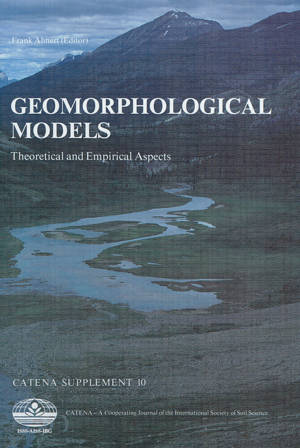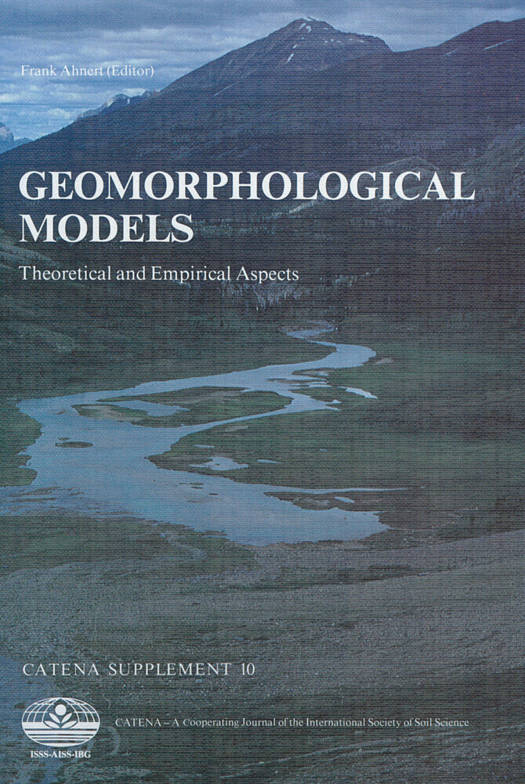
- Retrait gratuit dans votre magasin Club
- 7.000.000 titres dans notre catalogue
- Payer en toute sécurité
- Toujours un magasin près de chez vous
- Retrait gratuit dans votre magasin Club
- 7.000.0000 titres dans notre catalogue
- Payer en toute sécurité
- Toujours un magasin près de chez vous
Geomorphological Models
Theoretical and Empirical Aspects
74,95 €
+ 149 points
Description
Six papers of this volume deal with slope processes and slope form. A model study by Kirkby analyses the relative importance of wash processes and landslides for the growth of slope hollows. Torri discusses soil detachability in theoretical terms, while Ai & Mi AO present a model of landslides resulting from neo-tectonic stresses. Ahnert tests the applicability of a single model program to the simulation of process response systems at different scales; in an investigation of landforms on the Colorado Plateau, Schmidt points out structural and lithological factors that require special attention in model designs. De Ploey & Poesen raise some critical questions about the validity of model assumptions in slope development research. Channel processes and channel form are the topic of the following four papers. Schick, Hassan & Lekach lead off this group with a probabilistic model approach to the burial and exposure of pebbles in the channel fill during downstream transport; Ergenzinger shows the underlying order in the development of seemingly disorderly braided channel patterns. BAND investigates the lateral migration and change of the junction angle during the development of tributary streams, and Wieczorek presents a general function for the geometry of meander bends. The next group of papers, dealing with questions related to water and sediment yields, is led off by Yair & Enzel with a comparison of these variables in the arid and the semi-arid parts of the Negev. Ichim & Radoane have made a multivariate investigation of ninety-nine small catchments in Romania, and RAWAT discusses the present state of modelling knowledge related to water and sediment. More abstract is Millers methodological assessment of the theoretically important 'latent' variables that underlie the indicator variables which we observe in water and sediment studies. As the concluding section there are four papers on general theoretical considerations. Based on the mass continuity equation, Hardisty describes the local rate of surface lowering as a transport response function which may serve to characterise the stability of the system involved. Haigh urges that al investigation of natural systems shoulc include recognition of their hierarchi cal structure, and Trofimov offen an appraisal of geomorphological pre diction. In the last paper, Scheidegger seeks to condense the factors anc interactions that affect the evolution o landforms into a set of five 'fundamental principles'. The papers span a wide range of topics. Their contents may also reflect, to some extent, the various stages of methodological advancement and the various directions of geomorphological research that exist in different parts of the world today. However, common to all papers is the aim to contribute to the strengthening of the ties between theoretical and empirical geomorphology. This found expression also in the long, intensive and lively discussion which followed the presentation of virtually every paper at the meeting in Aachen.
Spécifications
Parties prenantes
- Editeur:
Contenu
- Nombre de pages :
- 210
- Langue:
- Anglais
- Collection :
- Tome:
- n° 10
Caractéristiques
- EAN:
- 9783510653515
- Format:
- Livre relié
- Dimensions :
- 170 mm x 240 mm
- Poids :
- 620 g

Les avis
Nous publions uniquement les avis qui respectent les conditions requises. Consultez nos conditions pour les avis.





